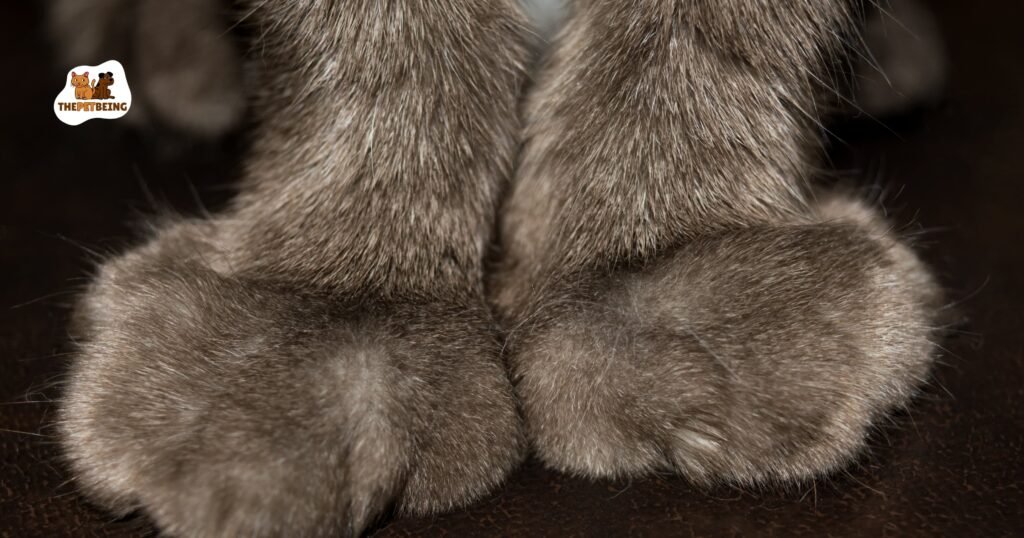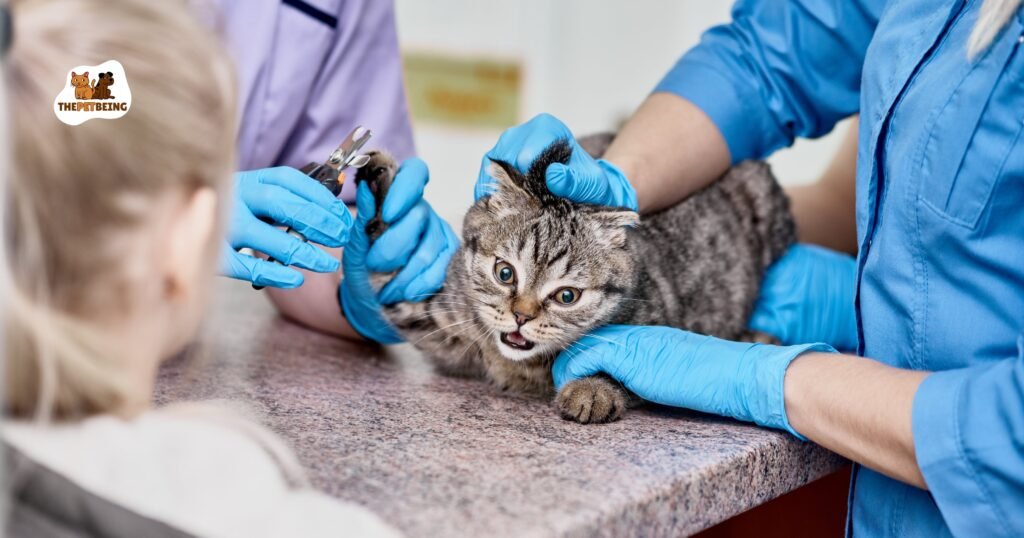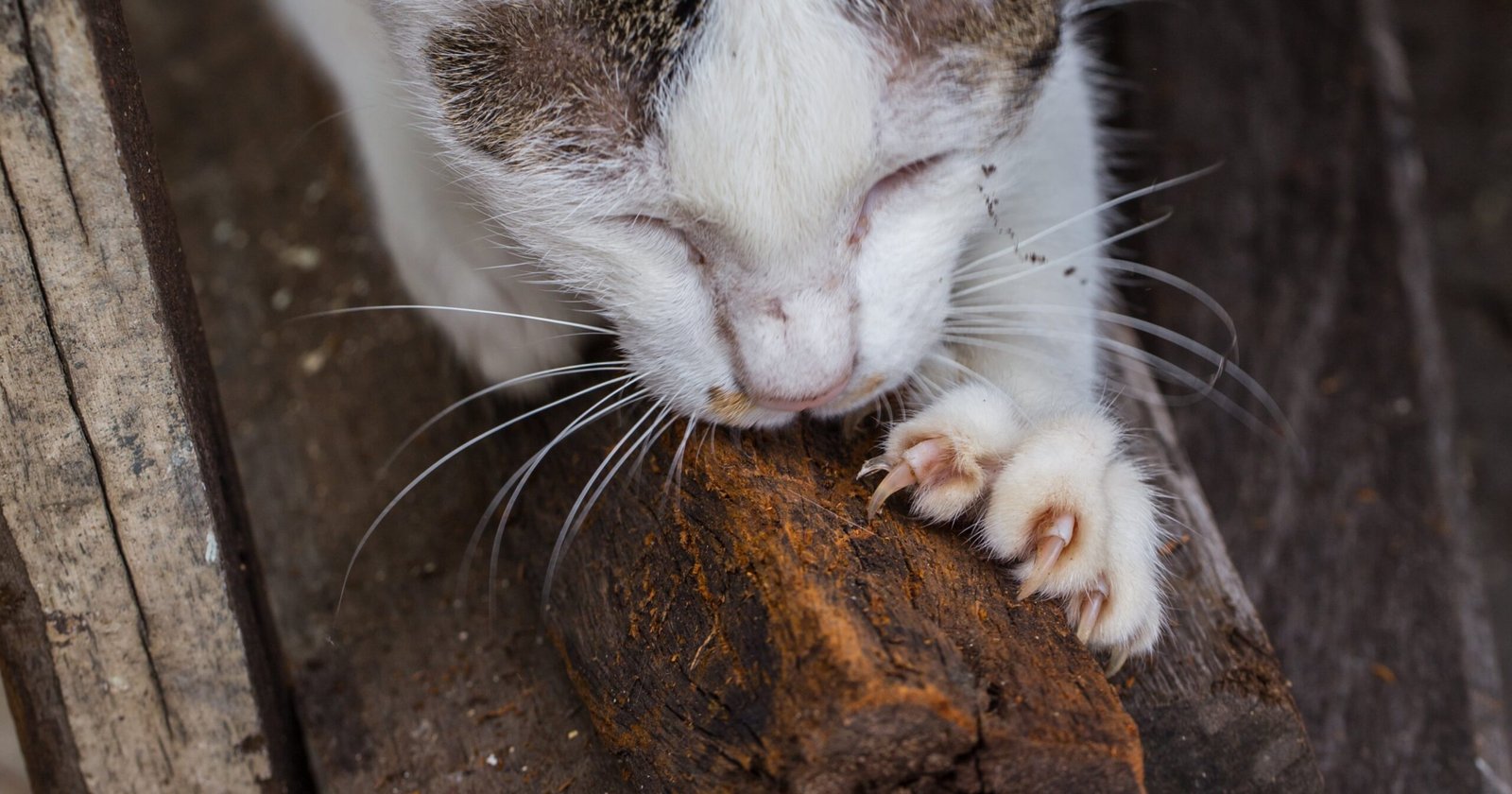- After the first day at home, your cat’s appetite is likely to return to its usual state.
- Expect some soreness in the toes for a period of up to three weeks.
- It’s normal for your cat to increase licking of its toes during this time, but it should be observed closely.
- To prevent potential bleeding, it’s important to keep your cat from jumping off furniture or high perches.
Declawing a cat is a controversial issue and with good reason. Most of us have heard the term “declawed” before, but you may not know exactly what it means or how to care for a declawed cat properly. Understanding the process and knowing the best ways to provide ongoing support and comfort are essential for any pet parent who has had their pet declawed. In this post, we will provide comprehensive information on caring for cats that have been declawed so that your feline friend can remain safe, happy, and healthy throughout their life.
Caring for a declawed cat can be both a rewarding and challenging experience. Owners who have chosen to declaw their cats must be aware of the special needs that come with caring for these furry friends – such as providing adequate pain relief post-surgery, preventing the growth of ingrown claws, and making sure kittens receive proper nutrition during claw regrowth. Whether you’ve recently adopted a declawed cat or their previous owner declawed your pet, this guide will give you all the essentials you need to know when it comes to looking after your special feline friend.
Understanding Declawing
The term “declawing” is somewhat misleading as it is not just the claws that are removed but also the last bone of each toe.
This procedure can be likened to amputating a human’s finger at the last knuckle.
It’s important to understand this as it highlights the significant discomfort and pain a cat experiences post-declawing.

Best Ways To Care For A Declawed Cat
Choose a suitable litter.
One of the first steps in caring for a declawed cat is choosing the right litter.
Post-surgery, a cat’s paws can be very sensitive. Regular clay litter may be painful or harmful.
There are litters made especially for declawed cats, so look for these in your pet store. Remember to keep the litter box clean, too.
This helps to prevent infections and keeps your pet comfortable.
A clean, soft litter box makes a big difference for a declawed cat.
Use pain relievers
Post-surgery, your cat will feel some pain. Your doctor can give you pain relievers to help. Never use human medicines.
They can hurt your cat. Make sure to use the pain relievers as told. If your cat is still hurting, talk to your doctor.
They can help you find what is best for your cat. Your cat’s comfort is very important.
Pain relievers are one way to help your cat feel better after declawing. Always remember your cat needs extra care and love during this time.
Monitor for infection
After declawing, keep a close eye on your cat’s paws for signs of infection.
Infections can be bad for your cat and may make them feel sick.
Signs of infection include bad smells, redness, swelling, or pus.
If you see any of these signs, take your cat to the doctor right away. Your vet can give medicine to fight the infection.
It’s important to catch infections early, so checking your cat’s paws every day is a good habit to get into.
Remember, your cat counts on you to keep them safe and healthy.
Provide a comfortable resting area
Your declawed cat needs a soft and comfy place to rest. Hard floors can be painful for their sensitive paws.
Make sure to provide soft blankets or a plush cat bed for them to relax. Their bed should be in a calm and quiet place, away from loud noises and other pets.
This makes them feel safe and can help them heal faster. Remember, your declawed cat needs extra love and care.
A cozy resting place is one simple way to make them feel better.
Always think of their comfort and do your best to help them feel safe and loved.
Ensure a safe environment.
It’s important to create a safe place for your declawed cat. Since they can’t use their claws to protect themselves, be careful with other pets.
Make sure your cat can’t get outside by mistake. If they go outside without claws, they can’t protect themselves very well.
Also, remove things your cat might trip over. When your cat is healing, they might not walk well. Keeping their space clear helps them move around safely.
Always look for ways to make your cat’s life easier and safer. Your kitty will be thankful for your care and love.
Monitor behavior changes
After declawing, your cat might not act the same. It’s important to watch for any changes in how your cat behaves.
They might be sad, hide a lot, or not want to play. They might even stop eating. These could be signs that your cat is in pain or not feeling well.
If you see these changes, you should talk to your vet. Your vet can help your cat feel better.
Remember, it’s your job to keep your cat safe and happy. Always pay attention to how your cat is acting. This can help catch any problems early.
Provide plenty of water and nutritious food.
A declawed cat needs healthy food and lots of water. Good food helps them heal faster. It also keeps them strong and healthy.
Water is also very important. Make sure your cat always has fresh water. Fresh water helps keep your cat hydrated.
This is very important when they are healing. Be sure to change the water every day. It should be clean and fresh.
Your cat will heal better and feel better with good food and fresh water.
Always remember your cat relies on you for their needs. Taking good care of your cat shows them you love them.
Regular doctor check-ups
Ensuring your cat sees the doctor often is key. Regular check-ups help the doctor know if your cat is healing well.
The doctor checks for problems, like infection or pain. If there is a problem, the vet can help. They might give medicine or advice.
A doctor’s check-up is a must for a declawed cat. It helps your cat stay healthy and happy.
Always remember a visit to the doctor is important for your cat’s health.
A healthy, happy cat is a joy. So, keep up with the doctor visits. Your cat needs them.
Use soft toys for play
After declawing, your cat will still have a natural urge to play. Make sure to provide soft toys that don’t hurt their paws.
Avoid toys that need catching or clawing. Instead, choose soft, light toys that your cat can push or bat around easily.
Gentle play is important for your cat’s well-being and can help them stay happy and relaxed.
Remember always to watch your cat while they play to ensure they are not hurting their paws.
Keeping your cat amused with safe toys can make their life after declawing more enjoyable and comfortable.
Show plenty of love and patience
Your cat will be experiencing a lot of changes. Offering plenty of cuddles, being patient, and speaking in a calm voice will help comfort your cat during this challenging time.
Caring for a declawed cat requires understanding, love, and a bit of extra work. With these tips, you can ensure your feline friend remains comfortable and healthy after the procedure.
Remember, declawing is a serious decision and should be considered last after exploring all other options.

Tips For Choosing The Right Declawing Procedure
1. Pick a Well-Trained Doctor
The first thing you need to do is find a good vet. This vet should have the right training for declawing cats.
They should know a lot about it. Making sure your vet has good training is the best way to help your cat.
2. Ask About Different Methods
There are different ways to declaw a cat. Some ways may be better than others. It’s important to ask your doctor about these methods.
The doctor can tell you what method is best for your cat. This can help your cat feel better faster after the surgery. Remember, your doctor knows a lot about cats. They want to help your cat.
3. Think About Your Cat’s Age
Age is a vital factor when considering declawing. Younger cats can recover faster and easier from the surgery.
Older cats may have a hard time healing and can face more risks. So, think about your cat’s age before deciding.
Always talk to the doctor about this. They can give good advice about the best time for surgery.
4. Consider the Risks
Declawing has many risks. It can cause pain and might change how your cat behaves. Sometimes, the claws grow back inside the paw and can hurt your cat.
Your cat may also need help with using the litter box. It might take a long time for your cat to heal. So, think about these risks before making a decision.
The doctor can tell you more about the risks. Always remember you should think about your cat’s needs first.
A happy cat is a healthy cat. So, make sure you make the best choice for your cat.
Understanding the Aftereffects of Declawing
Declawing a cat is a big choice. It changes a cat’s life a lot. After declawing, a cat may feel pain. It may also walk differently.
This is because a cat uses its claws to balance. When the claws are gone, the cat has to learn to walk in a new way.
This can be hard for the cat. It takes time to learn. That’s why it’s important to help your cat during this time. Give your cat lots of love and care.
Some cats might act differently after declawing. They might feel scared or upset. They might hide more often.
They might not want to play or eat. These could be signs that your cat is not feeling well. It’s important to watch your cat closely.
If you see any changes, it’s best to talk to the vet. The vet can help your cat feel better.
Also, without claws, a cat can’t protect itself. That’s why it’s best to keep a declawed cat inside the house.
Keeping the cat inside keeps it safe from other animals. It’s also good to keep the cat’s home clean and safe.
Make sure there are no things the cat can trip over. This helps the cat move around safely.
Remember, a declawed cat still needs to play. It’s good for the cat’s mood and health. But, it’s best to give the cat soft toys.
These toys shouldn’t hurt the cat’s paws. Always keep an eye on your cat while it plays. This helps you see if the cat is hurting its paws.
Lastly, remember to keep the cat’s food and water fresh. Good food and clean water help the cat heal faster.
They also keep the cat healthy. Plus, the cat needs to see the vet often. The vet can check if the cat is healing well.
It’s always good to think hard before deciding to declaw a cat. It’s a big choice. And it’s always best to think about what’s good for the cat. After all, a happy cat is a healthy cat.
Conclusion
Caring for a declawed cat needs kindness, work, and a lot of love. There are many things to think about. First, the cat’s doctor visit is very important. The doctor checks how the cat is healing. They can help if there is a problem. Second, playtime is a must for a declawed cat. But remember, the toys need to be soft and safe. This way, the cat can have fun without hurting its paws. Also, it’s important to remember that declawed cats must stay indoors. This keeps them safe from other animals. Keep their home clean and free of things that can get in their way. This helps them move around easily. And remember food and water. Fresh food and clean water help the cat stay healthy. They also help the cat’s body heal after surgery. Also, your cat will need lots of love and patience. They might act differently after the surgery, so being kind and the patient is very important.
Finally, remember to think hard before you decide to declaw your cat. It changes their life a lot. But if you do decide to declaw, know that with the right care, your cat can lead a happy and healthy life. This care will need good choices, lots of love, and a little extra work. But in the end, it’s all worth it. A happy cat means a happy home.
FAQs
What Is Declaw?
Declawing is a surgical procedure that removes a cat’s claws. It’s like if a person has the tips of their fingers cut off at the last joint. This can change the way a cat behaves and moves. It’s a big choice, and you should think hard before deciding to do it. After declawing, a cat might feel pain and need extra care and love to recover.
Why Do Some People Choose to Declaw?
Some people choose to declaw their cats to prevent them from scratching furniture, other pets, or even people. They might be worried about their cat causing damage or harm. However, declawing is a big decision because it changes a cat’s life in many ways. It can cause pain and change the way a cat walks or behaves. Before deciding to declaw, it’s important to understand all the implications and consider other alternatives like scratch posts or nail caps.
What Happens During Declawing?
During declawing, the doctor performs a surgery to remove the cat’s claws. This surgery is not just a simple nail trim; it’s like a person losing the top part of their finger. It can be painful for the cat, and they need time to recover after the surgery. The cat will need lots of extra care, like soft toys to play with, and it might act differently. It’s important to keep the cats safe indoors and have them checked by the doctor often. This helps make sure the cat is healing well after the surgery.
How Does Declawing Affect Cats?
Declawing can greatly affect a cat’s life. It can cause pain and change how a cat walks or behaves. After the surgery, a cat might feel scared and act differently. Since a cat uses its claws for protection, without them, it can’t defend itself. So, declawed cats should always stay inside. Also, declawing can cause a cat to have trouble using the litter box. That’s why it’s important to think hard before deciding to declaw. If a cat is declawed, it needs lots of care and love to help it heal and adjust.
How can I make my declawed cat life easier?
Making life easier for a declawed cat involves lots of care and kindness. Use soft toys for play to avoid hurting the cat’s paws. Keeping them indoors helps keep them safe, as they can’t defend themselves without claws. Clean their home and remove things they can trip over. This helps them move safely. Also, fresh food and water are very important. These help with healing and keeping the cat healthy. Lastly, regular doctor visits are a must to ensure the cat is healing well. Always be patient and loving with your cat, as they may act differently after surgery.
How long does it take for a cat to heal from being declawed?
The healing time for a cat after being declawed can vary. Usually, it takes about two weeks for the paws to heal. But it might take longer for the cat to feel normal again. It’s because declawing is a big surgery. It can make the cat feel pain and behave differently. It’s very important to keep an eye on the cat during this time. Always show them love and take them to the doctor regularly. The vet can help make sure the cat is healing well and give the cat medicine if needed.

